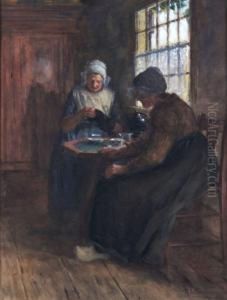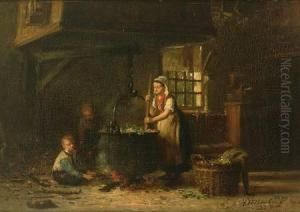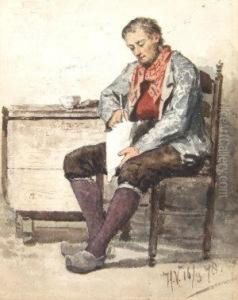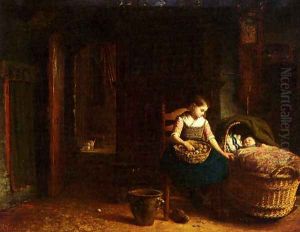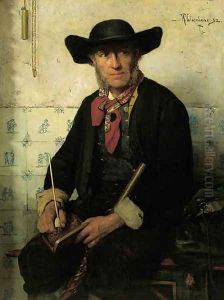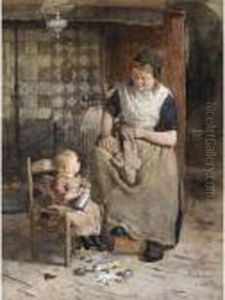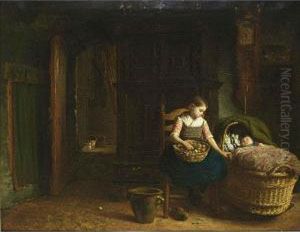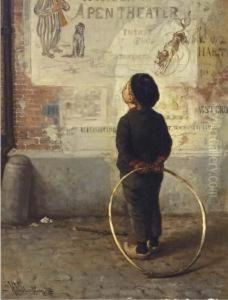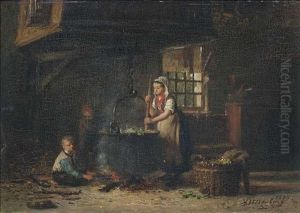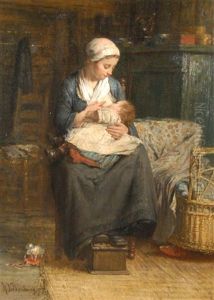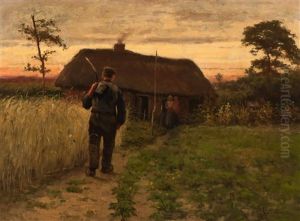Hendrik Valkenburg Paintings
Hendrik Valkenburg was a 19th-century Dutch painter known primarily for his genre scenes and portraits that capture the rural life of the Netherlands. Born on December 26, 1826, in Leeuwarden, Netherlands, Valkenburg began his artistic career at a relatively young age. He studied at the Amsterdam Academy under the tutelage of Jan Adam Kruseman, a prominent portrait painter of the time.
Valkenburg's early works were primarily portraits, but as his career progressed, he became more interested in depicting daily life and customs of the Dutch countryside. His genre scenes often included interiors of homes, showcasing the inhabitants and their activities with an attention to detail and a warm, inviting atmosphere. These paintings were well-received for their charm and historical value as they provided a glimpse into the lives of ordinary people during that period.
Throughout his life, Valkenburg exhibited his work in various venues, including the annual exhibitions of living masters in Amsterdam. His art was appreciated for its realism and the ability to evoke nostalgia amongst viewers for a simpler, rural past. Valkenburg’s works were characteristic of the Dutch Romantic school, which emphasized sentiment and the beauty of the Dutch landscape and its people.
Hendrik Valkenburg passed away on February 5, 1896, in Laren, Netherlands. His legacy includes a rich body of work that continues to be studied and admired for its portrayal of 19th-century Dutch rural life. Valkenburg's paintings are held in collections both in the Netherlands and internationally, contributing to the understanding of the social history and culture of his time.



